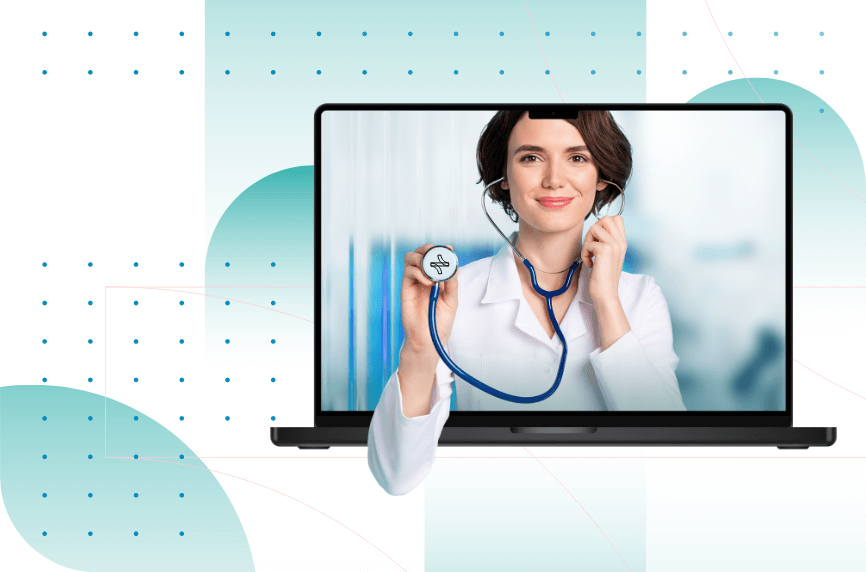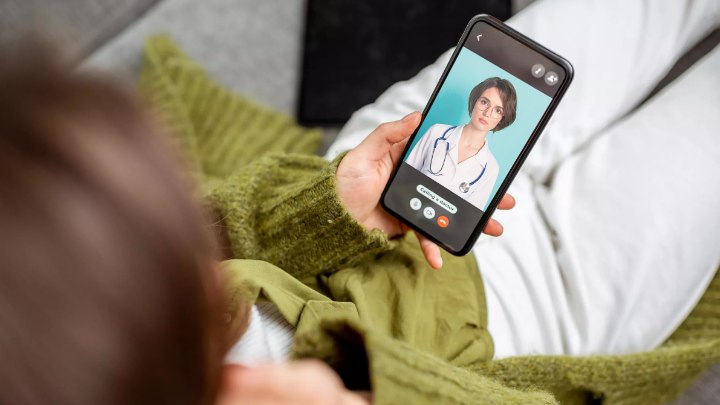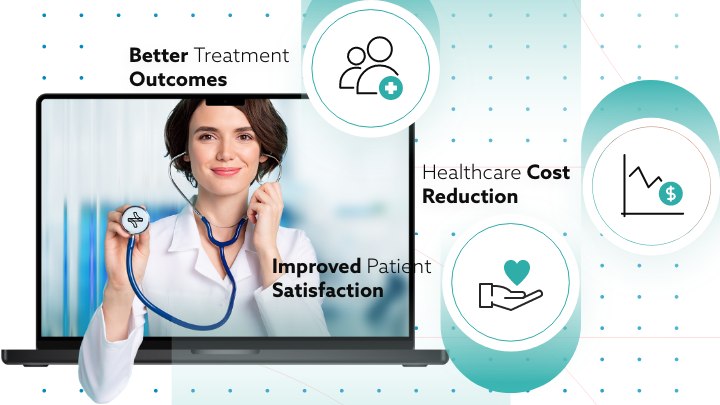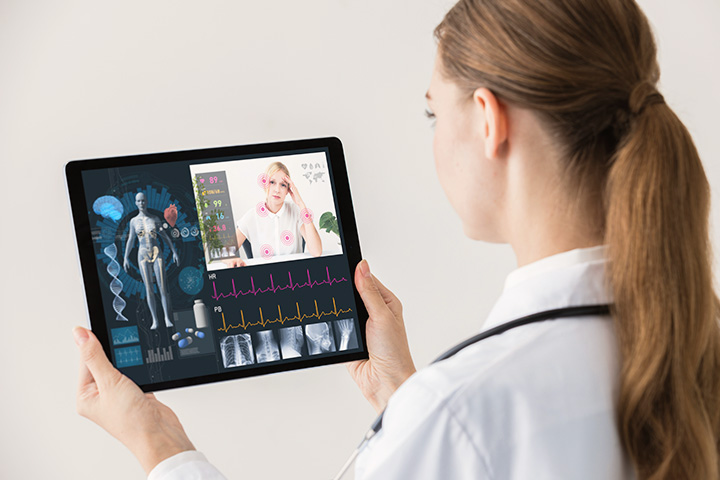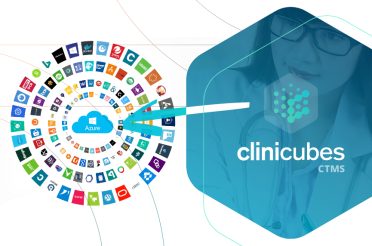COVID-19 as a catalyst for telemedicine
When the COVID-19 pandemic swept the world, in person interaction became a danger to personal well-being. Most businesses had to adapt to the current situation and move their operations online. But there was one critical problem regarding among healthcare providers:
How are they going to treat patients who might endanger public health?
This is where telemedicine comes in as an alternative. This practice incorporates the delivery of health care and information virtually. It is not a technology or a separate or new branch of medicine but rather a collection of platforms and software solutions that offer users the ability to access virtual alternatives to classical patient care services.
What exactly is telemedicine?
Here is a definition of telemedicine provided by the World Health Organization (WHO):
“The delivery of health care services, where distance is a critical factor, by all healthcare professionals using information and communications technologies for the exchange of valid information for diagnosis, treatment and prevention of disease and injuries, research and evaluation, and the continuing education of health care workers, with the aim of advancing the health of individuals and communities.”
The history and use of practices such as telemedicine have brought a lot of data and research on the topic and how it impacts the medical industry. Telemedicine can be categorized into the following:
Store-and-forward
Store-and-forward (asynchronous telemedicine) is a type of telemedicine consultation in which patients send medical images or other medical information to a healthcare professional, who can then review it and provide a diagnosis or treatment recommendation. It applies in different fields, including primary care, specialty care, and consultation-liaison services. Store-and-forward can be useful when real-time communication is not necessary or when the patient and healthcare provider are located in different time zones.
To use store-and-forward telemedicine, patients typically need access to a device that can capture and transmit medical images, such as a smartphone or digital camera. The medical information is sent to the healthcare provider through a secure platform, such as telemedicine software. The healthcare provider can review the information and provide a diagnosis or treatment recommendations.
Real-time. Real-time telemedicine is a type of consultation where a healthcare professional and a patient communicate in real time over a video or phone call. This allows the healthcare provider to assess the patient’s condition and provide medical advice or treatment remotely.
Telemedicine has become popular in recent years because it is a way to provide care to people in remote or underserved areas or to patients who have mobility issues. It can also be a convenient way for patients to receive medical care without taking time off work.
There are several ways through which patients can communicate with healthcare specialists:
- Audio
- Video
- Image
- Text
Telemedicine software may have a diverse toolset that encompasses these communication formats. A video conference service might constitute a real-time video and audio connection, while documents are data-prerecorded text and image files. Informational videos and text may also be prepared in advance and distributed whenever and to whomever.

Explore more innovative digital health solutions tailored to your needs
Learn all the ways through which you can use the full potential of telemedicine by comparing and integrating the best solutions with expert guidance.

Difference between telemedicine and telehealth
While telemedicine provides clinical healthcare services remotely, telehealth encompasses a wider range of activities in healthcare. Telehealth can include telemedicine, as well as other activities such as continuing medical education and administrative meetings. It may improve access, efficiency, and effectiveness of healthcare delivery and support public health initiatives.
Obstacles that prevent telemedicine from mass adoption
Technical aspects
Technical issues are reported to be one of the main obstacles to telemedicine solutions. The adoption of this medical practice might be sluggish because of no universal access to technology, poor Internet connection, and low expansion of rapid Internet networks.
Device issues, breakdowns of video consultation platforms, and software upgrades are other commonly reported problems. Furthermore, some patients may face difficulties while using different telemedicine platforms and need in-person technical support.
If patients use a well-developed telemedicine platform, the only thing they need to provide is a stable Internet connection. In order to benefit as much as possible from the consultation with the doctor, patients should prepare before the meeting.
For instance, patients may want the following things:
- summarize their thoughts on what you want to talk about
- ensure a quiet and comfortable space
- make sure the camera, microphone, and audio on the device they use are properly set up
- find a strong internet connection before the call
Data privacy and confidentiality
One of the main setbacks that prevent patients from engaging in telemedicine visits is the concerns regarding privacy and confidentiality. These concerns are a major limitation because patients demand the use of technology for care delivery without infringing on their data.
Compliance with regulations offers procedures and standards that contribute to data privacy. While General Data Protection Regulation (GDPR) aims to help EU citizens gain more control over their personal information, the Health Insurance Portability and Accountability Act (HIPAA) builds the foundation for data protection in the US.
All parties involved in developing telemedicine software should be HIPAA-compliant. For example, a telemedicine software vendor should ensure that the company under which it operates follows HIPAA regulations.
To ensure that patients’ data is safe from leakage and misuse by third parties, healthcare providers follow a number of security principles. For example, with data encryption, coherent password policies, multi-factor authentication, and security audits, medical organizations may prevent unauthorized access to sensitive information.
Training of healthcare providers and patients
For doctors using software to substitute this communication seems dangerous, so they are slow to support it. Furthermore, patients worry that they will make a mistake during a virtual visit, as they lack the ability to operate with it.
These worries are valid but only in cases when there is little or no training in telemedicine programs. There is a need for investment in a course, workshop, and training for both patients and doctors on how these telemedicine platforms work and can improve patient outcomes.
Doctor-patient relationship
In studies that compared patient satisfaction between real-life visits and telemedicine visits, most patients reported that the presence of a doctor made them feel calmer. They mentioned that non-verbal cues, such as body language, empathetic touches, and patience, improved their experience.
Patients may have a much better experience with real-life visits, but emergencies and other factors should also be taken into consideration. People with major health problems should always aim for real-life interaction with medical professionals, but those with less demanding issues might also use a HIPAA-/GDPR-compliant telemedicine solution.
Benefits of telemedicine
Telemedicine solution designed to benefit both patients and healthcare providers, has paved the way for innovative organizations:
Faster access to information from specialists
Telemedicine gives anyone much quicker access to medical professionals. Video conferencing or audio calls are easy to manage and much less time-consuming than a visit to the hospital and allow patients to share their pain or discomfort at the onset.
This faster access to care is sometimes as good as a follow-up examination. Many health issues don’t disappear long after treatment starts and require repeated visits to discuss the management of medication and symptoms. Telemedicine turns out to be the optimal solution that reduces the time it costs of these repeated visits to the hospital.
Control of infectious illnesses
When patients having an infectious disease visit a hospital, they might put public health in danger. Thankfully, virtual conference calls are enough for some medical problems that do not require immediate hospitalization. Telemedicine services that allow for online communication are a simple and direct way to escape this problem. Patients don’t have to visit the medical facility, which creates a sense of comfort.

Improve the outcomes of your patients using telemedicine
Get ahead of your competition by being the first to understand how telemedicine technologies can massively improve your healthcare practice.
Management of chronic illnesses
A medical specialist should focus on mitigating pain and providing the appropriate treatment to the client. Many people are forced to live with chronic illnesses and require medical assistance to maintain adequate quality of life.
By means of telemedicine services, patients with chronic conditions receive better care:
- Telebehavioral care and therapy
- Routine check-ins for patients with certain cancers, rheumatological diseases, diabetes, and migraines
- Explanation of test or imaging results
Lack of reimbursement
Healthcare providers may not receive reimbursements for telemedicine services because of regulatory or policy barriers. For example, some insurance plans may not cover telemedicine services. Additionally, some Medicaid and Medicare programs may have limitations on providing insurance plans for telemedicine services or may require that, in specific conditions, medical institutions may receive reimbursements.
Likewise, healthcare providers may not receive reimbursements for telemedicine services because of limitations on the types of healthcare professionals who can provide telemedicine services. For example, only certain healthcare professionals, such as physicians or nurse practitioners, can provide telemedicine services and receive reimbursement.
Cost-effectiveness
Nearly a quarter of respondents (21%) to the Software Advice survey cited not having to travel as an essential benefit of telemedicine. Traveling to the doctor’s office, especially for people living in rural areas, can be a considerable expense.
Not to mention medical services themselves may come with a hefty price tag. According to a 2014 study, traditional office visits average $136 to $176, but virtual visits range in cost from $40 to $50 per visit.
Also, telemedicine allows healthcare providers to see patients remotely. Thus, they don’t have to pay for maintaining a physical office space. This practice may result in significant cost savings. Telemedicine allows healthcare providers to streamline the medical processes, resulting in fewer missed appointments and a higher volume of patients seen per day, which increases revenue.
Reduced time waiting for doctor consultation
With telemedicine, patients can schedule appointments at their convenience rather than having to take time off work or arrange for transportation to a healthcare facility. Some telemedicine platforms have a virtual waiting room feature, which allows patients to “check-in” for their appointment remotely. As a result, healthcare providers reduce the time patients spend waiting in a physical waiting room.
Application of telemedicine in medical specialties
Telemedicine finds use in different medical specialties, including:
- Primary care services: consultations for minor illnesses, prescription refills, and routine check-ups.
- Pediatrics and geriatrics: Telemedicine can be used to provide consultations to children and elderly patients.
- Dermatology: Consultations for skin conditions and monitoring of treatment effectiveness.
- Cardiology: for patients who suffer from heart disease and require special attention
- Neurology: consultations for patients with conditions such as multiple sclerosis or epilepsy.
- Psychiatry: Telemedicine finds application in providing therapy sessions with a psychiatrist or other mental health professionals.
- Oncology: monitoring the progress of cancer treatment.
- Endocrinology: monitoring patients with conditions such as diabetes or thyroid disease.
Key telemedicine technologies
Telemedicine and remote patient monitoring (RPM)
While telemedicine is about delivering health services remotely, RPM refers to monitoring a patient’s health status from a distance using technology. Medical providers utilize wearable devices and sensors to collect data about a patient’s vital signs, such as heart rate, blood pressure, and temperature. After that, health data is transmitted to a central monitoring system of the medical institution for the patient intake process and analysis.
In the age of the Internet of Things (IoT), ultrafast connectivity enables medical devices and equipment to be connected to a server or the cloud. Thus, telemedicine technology can operate with real-time data, which leads to higher-quality remote healthcare.
Telemedicine and RPM often work together to provide more comprehensive care to patients. For instance, healthcare providers might use telemedicine to consult a patient remotely while using RPM to monitor the patient’s health status and send alerts. Integrated wearables track patient vital signs throughout the day and transmit data to the central cloud system. Healthcare providers can access patient information via a dashboard or clinical decision support system that compiles the data and lets them see the patient status in real-time.
This way, RPM and telemedicine can help patients with chronic conditions better manage their health and may even help prevent urgent care and emergency department visits. When patients feel unwell, they may schedule a telemedicine appointment.
Artificial intelligence (AI) in telemedicine
Artificial intelligence (AI) brings innovative capabilities to telemedicine. Some examples include:
- Healthcare providers may utilize AI to develop virtual assistants or chatbots that can answer patient questions, provide information about medical conditions, and assist with scheduling appointments.
- Artificial intelligence may provide prompts that facilitate taking a patient’s history during an online visit through dynamically adjusting questions based on responses.
- AI-based tools may offer personalized reminders for medication adherence and recommend routine checks based on current health data.
Integration with Electronic Medical Record (EMR) system
Communication between EMR and your integrated telehealth software allows both platforms to send and receive health data. This integration is essential because it boosts efficiency and raises the standard of care. It enables medical professionals to make cohesive decisions, facilitating quicker diagnosis, reducing prescription mistake rates, and improving patient outcomes.
EMR integration may also reduce record-keeping, as all patient data comes from a single up-to-date source. Similarly, telemedicine solutions integrated with a practice management system can also enhance communication and patient outcomes, as well as improve the overall efficiency of the medical facility.
Medical apps paving the way for telemedicine
Telemedicine apps are growing in popularity and are becoming more widely accessible as they provide efficient healthcare services. For example, the mobile app Healthsuite, developed by BGO Software for Ampersand Health, supports patients with chronic inflammatory conditions. This solution helps people easily contact the clinical team responsible for the treatment, medication adherence, and symptom management.
Thanks to a couple of key features available, telemedicine applications offer a seamless user experience for doctors and patients:
Clinical dashboard
Telehealth apps might give clinicians a dashboard for managing patients’ health data collected from virtual visits, symptom surveys, remote patient monitoring devices, billing information, etc. As a result, medical professionals can prioritize treatment techniques and deliver better care. Furthermore, patients can keep a customizable personal record with data regarding their medical condition.
Virtual visits and communication tools
On a telehealth device, which is often a tablet or mobile phone, patients can speak with medical professionals in real-time over:
- video calls
- phone conversations
- text messages
Symptom research and analytics
Daily symptom surveys give doctors real-time data on a patient’s symptoms, particularly those associated with mental health or chronic conditions. This practice leads to a better understanding of a patient’s health parameters and habits, and medical professionals may deliver better care. Furthermore, comprehensive analytics based on the gathered medical data can facilitate the decision-making process regarding treatment and diagnosis.

Whether you’re a startup, a Fortune 100 company or a government organisation, our team can deliver a solution that works for you.
BGO Software
Medication reminders
Medication adherence is a critical factor in recovery and treatment effectiveness. To promote this much-needed activity, medical providers should implement alerts and notifications into the telehealth app to improve patient outcomes.
Educational modules
Patients who get condition-specific education can understand their medical condition and become active participants in the treatment process. Research articles and educational lectures customized to each patient’s health status may also improve medication adherence.
The adoption of telemedicine shows the attempts of healthcare providers to adapt to the challenges of the post-COVID world. Medical institutions invest in telemedicine software and health informatics to improve patient outcomes and reach business objectives making their revenue cycle more efficient.
However, a telemedicine project does not come cheap (there is no free version of it) and requires dedication from the healthcare organization and the software provider. Therefore, it’s vital to work with a reliable IT partner with deep experience in health tech that will offer maintenance and support.

